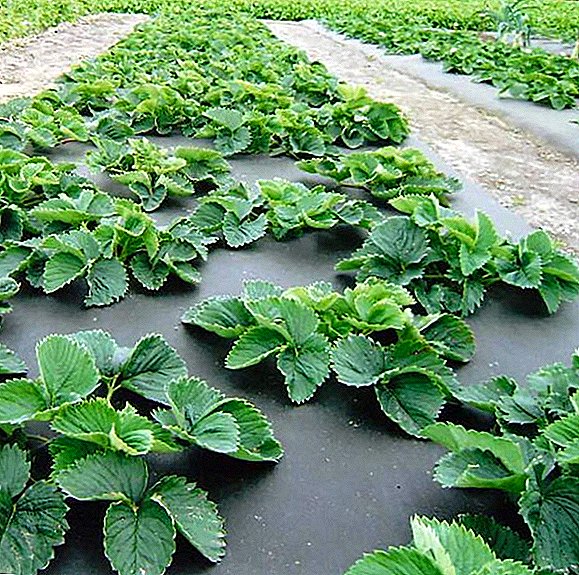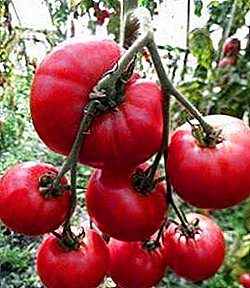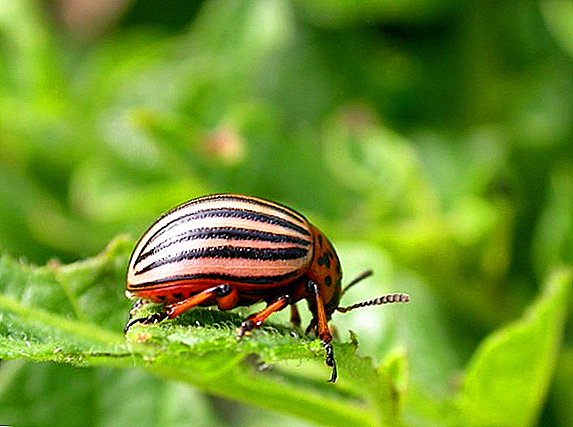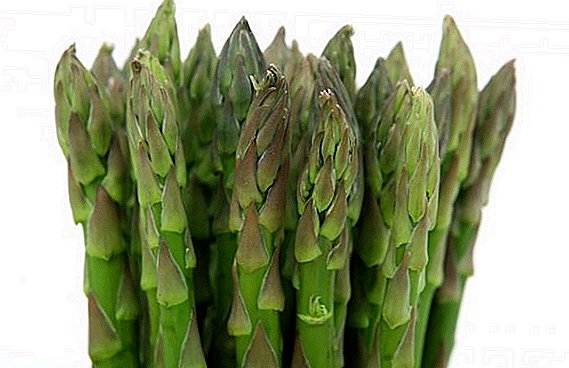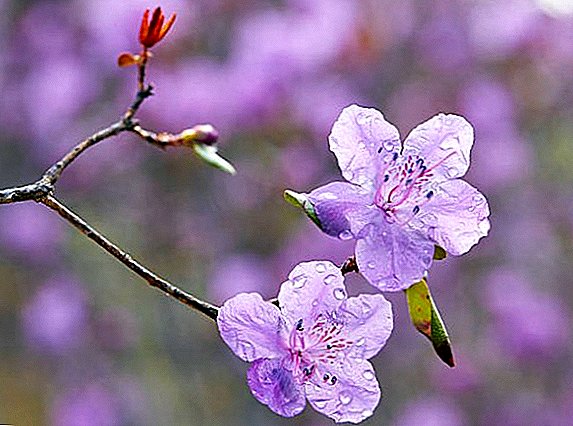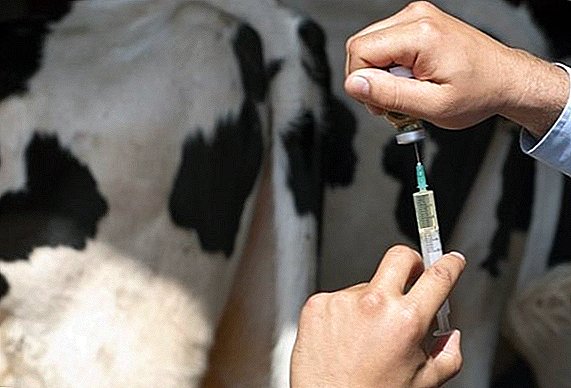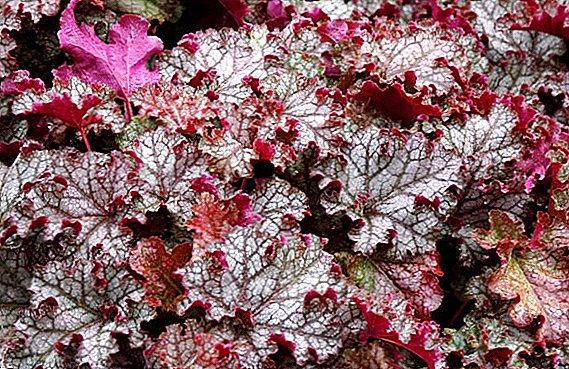 Geichera is a beautiful perennial with decorative leaves, which is suitable not only for vegetative reproduction, but also for planting with seeds.
Geichera is a beautiful perennial with decorative leaves, which is suitable not only for vegetative reproduction, but also for planting with seeds.
What are the features and advantages of this process, we will look further.
Did you know? Earlier, only small-colored plant variety 'Palace Purple' was grown in gardens, which in 1991 received the title of perennial of the year. But now breeders have bred more than 200 varieties of this plant.
Botanical description
Geicher - herbaceous perennial of low growth, which is able to endure the winter in the open field. Belongs to the family Kamenelomkovye. In the wild form grows in the mountains of North America.
Leathery dense leaves of a plant have different variations of forms. Grow on long petioles, which are collected in the rosette. Growing up, such a bush can reach 60 cm in diameter.  Perennial blooms in mid-summer, maintaining decorative almost the entire warm season. Flowers are on peduncles up to a meter in length (average length is 60 cm). Located at the top of the arrows in the form of openwork inflorescence, which is formed by numerous bells of various shades, mostly red.
Perennial blooms in mid-summer, maintaining decorative almost the entire warm season. Flowers are on peduncles up to a meter in length (average length is 60 cm). Located at the top of the arrows in the form of openwork inflorescence, which is formed by numerous bells of various shades, mostly red.
Did you know? All species diversity of the plant originated mainly from three varieties of geyher: American, hairy, blood-red.
Pros and cons of the seed method
Before deciding how to grow geykher from seed, it is necessary to weigh all the advantages and disadvantages of this method of reproduction. Among pros can be called such:
- minimum labor costs, easy way;
- since the seed protects the embryo, transmission of viral infections is excluded;
- the seed can be stored for a long time, experiencing any adverse conditions.
 However, this method has its own limitations. Among them:
However, this method has its own limitations. Among them:- few varietal and specific signs remain: there are no beautiful inflorescences, the decorativeness of leaves is lost;
- large losses of planting material during germination;
- limited reserves of nutrients in the seed.
For the decoration of the garden, other geyher “brothers” are also used: saber-hemlock, bergenia, astilbe.
How to grow geykher from seed
Sometimes geyhera is needed in large quantities, then it will be justified to grow it from seed at home. In addition, it is not very inconvenient to care for tiny seedlings of plants in the garden, so it is better to do this in special containers at home.
Landing dates
The sowing of planting material, depending on the climate zone, begins in March or april.
Selection of planting material
When choosing a seed, it is only important to pay attention to their shelf life. Germination, they retain a maximum of six months. But if they are packaged in foil bags, this period may be a year and a half. 
Substrate and Capacity Preparation
Under the seedlings it is necessary to choose a wide tank with a height not less than 5 cm with good drainage holes. The soil will suit any loose. The main thing is that it is not too sour. Soil must first be calcined in the oven for about 5-7 minutes or pour over boiling water. Sowing should be carried out in the dried and cooled soil.
Landing pattern
Geicher reproduction with seeds does not require a special seeding scheme - planting material evenly distribute over the ground surface.
Since the seeds of the plant are very small, in order to scatter them as evenly as possible, they take a folded sheet of paper, planting material is poured into the middle and shake it across the surface of a container filled with soil. It is not necessary to deepen them, it is enough that the soil is slightly wet.
Additionally, it is necessary to pour it, gently pouring water on the walls of the tank. Then the surface is covered with a transparent film or glass. 
Rules for the care of seedlings: conditions for growing
For the normal development of seedlings need enough sunlight. To do this, the dishes with seedlings should be put in a bright place. But it is important that there is no draft. Periodically, the ground should be aired, raising the glass or film for no more than half an hour. This will prevent the formation of fungal diseases. The ideal temperature for germination and seedling development - 20-22 ° C.
In 2-3 weeks shoots should appear. Cleaning the film at this time is still early. It is necessary to make small holes in it or slightly lift the glass.
If you want to decorate your plot with plants with decorative leaves, pay attention to the miscanthus, rogers, garden yucca, host, polynyadorny.
When the plants appear on three leaves, their diving so that the distance between the plants was 4-6 cm. All the time it is necessary to monitor the soil moisture: do not allow it to dry, but not too much to flood. While the sprouts are young and tender, it is enough to spray them with a spray bottle.
In mid-May, plants gradually begin to harden, bringing them to open air. Then capacity is added in a garden for a couple of weeks. Planted plants in a permanent place can be in early June. 
Features flower transplant to a permanent place
As a rule, the plant is planted in open ground at the end of spring, but planting is also acceptable in the fall if the weather is warm enough.
Important! When planting in the autumn for the winter, be sure to mulch with bark or wood ash. After the end of spring frosts mulch must be removed.
It is necessary to choose a place for planting, based on the characteristics of a plant variety. But as a general rule, they can not be planted in places where a lot of water accumulates - plant does not like excess moisture. Most varieties should be planted in well-lit areas, but without direct sunlight at noon. Otherwise, the decorativeness of the leaf will suffer: it will change shape, lose color. The ideal place is where there is a lot of sunlight in the evening or in the morning, and a shadow in the afternoon.
However, this does not apply to varieties that have burgundy or red leaf color. With a lack of lighting, they lose this color and become unsightly green.
Important! In general, geykhera is resistant to pests and diseases, but in case of too high humidity it can be damaged by powdery mildew. Thin roots of a plant can undermine a weevil, and leaves like slugs.
Planting the plant in a permanent place, maintain a distance between seedlings of 20-25 cm.  The soil should be loose, well drained. By winter, these plants will form a dense outlet. In general, they are able to survive the winter without shelter, but in the first year of life it is better to cover them with fir branches.
The soil should be loose, well drained. By winter, these plants will form a dense outlet. In general, they are able to survive the winter without shelter, but in the first year of life it is better to cover them with fir branches.
Growing geykhery from seeds is not difficult. True, in this case one must be prepared for the loss of some specific features. But the procedure itself of sowing and growing seedlings is no different from the usual cultivation of plants from seeds.



